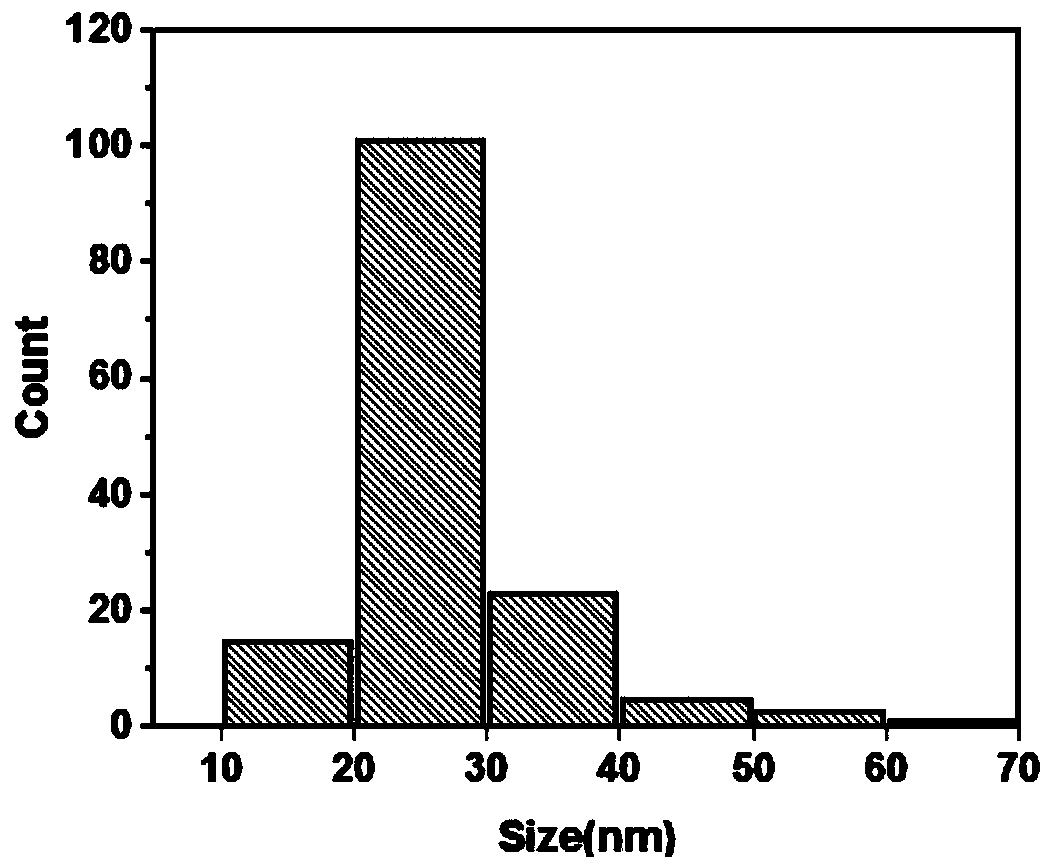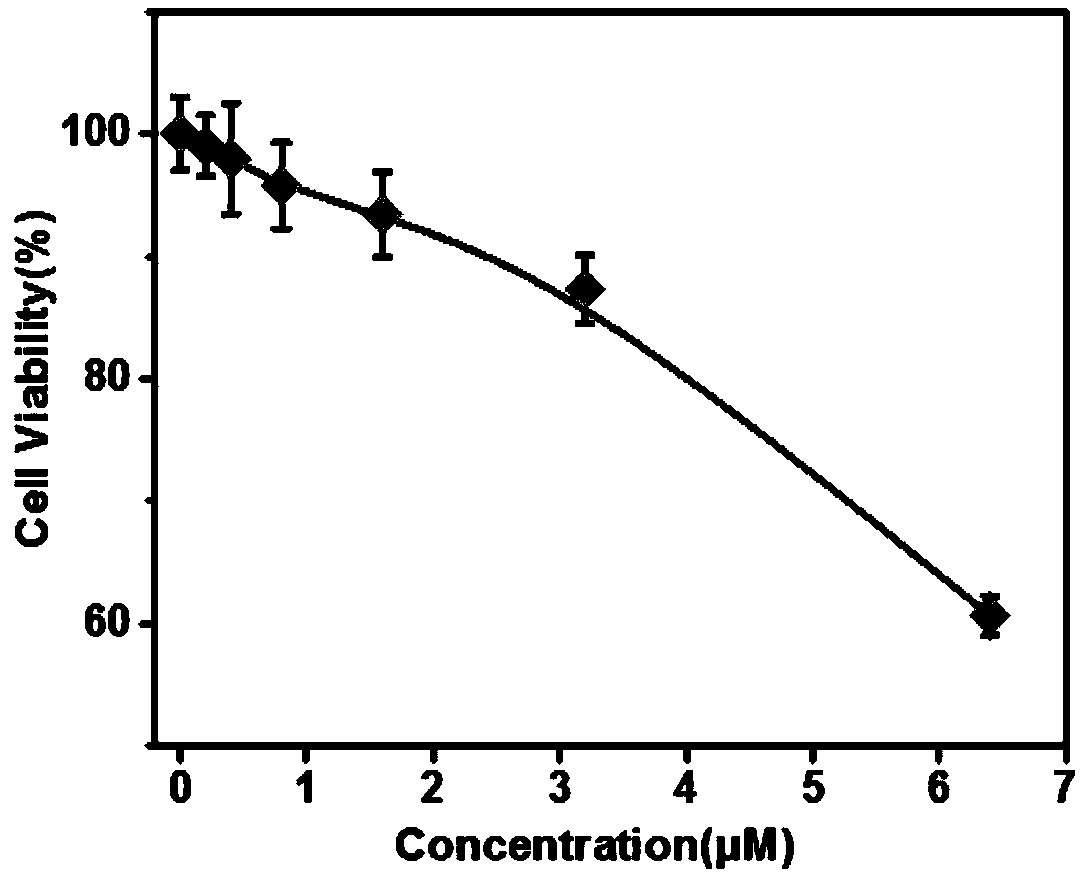Quantum dot low-density lipoprotein nano-composite probe as well as preparation method and application
A low-density lipoprotein and nanocomposite technology, which is applied in the field of quantum dot low-density lipoprotein nanocomposite probe and preparation, can solve the problems of high cost, poor biocompatibility, complicated preparation, etc., and achieves strong loading capacity, coupling Fast, repeatable results
- Summary
- Abstract
- Description
- Claims
- Application Information
AI Technical Summary
Problems solved by technology
Method used
Image
Examples
preparation example Construction
[0030] The method for preparing the above-mentioned composite probe according to one embodiment of the present invention can be composed of figure 1 shown schematically. The cationic polyelectrolyte was first mixed with LDL, and then mixed with sulfhydryl or carboxyl-modified quantum dots.
[0031] The method for preparing composite probes according to one embodiment of the present invention comprises the following steps:
[0032] 1) Prepare the dispersion liquid of cationic polyelectrolyte
[0033] Provide cationic polyelectrolyte, add deionized water to dilute, then add sodium chloride to adjust its concentration. Sodium hydroxide was then added to adjust its pH. Specifically, add cationic polyelectrolyte (including polydiallyldimethylammonium chloride or polyacrylamide of any molecular weight) into deionized water, dilute to a concentration of 0.005-0.01mol / L, add sodium chloride solution , so that the concentration of sodium chloride is 0.05-1mol / L, add sodium hydroxid...
Embodiment 1
[0041] 1) Add cationic polyelectrolyte (polydiallyl dimethyl ammonium chloride of any molecular weight) into deionized water, dilute to a concentration of 0.05mol / L, add sodium chloride solution, so that the concentration of sodium chloride is 0.05mol / L, add sodium hydroxide solution to adjust the pH of the mixture to 7.2.
[0042] 2) Add quantum dot powder to phosphate buffer (sodium phosphate buffer), and adjust the concentration of quantum dots to 1 μmol / L.
[0043] 3) Add human low-density lipoprotein powder into phosphate buffer (sodium phosphate buffer), add sodium hydroxide solution, and adjust the pH of the mixture to 7.2.
[0044] 4) Take 10 mL of human low-density lipoprotein dispersion, add 10 mL of cationic polyelectrolyte solution dropwise, and stir evenly. Then add 1mL of quantum dot dispersion liquid with a peristaltic pump, mix evenly, and then centrifuge and wash to obtain a quantum dot low-density lipoprotein nanocomposite probe.
Embodiment 2
[0046] 1) Add cationic polyelectrolyte (polydiallyl dimethyl ammonium chloride of any molecular weight) into deionized water, dilute to a concentration of 0.07mol / L, add sodium chloride solution, so that the concentration of sodium chloride is 0.07mol / L, add sodium hydroxide solution to adjust the pH of the mixture to 7.2.
[0047] 2) Add quantum dot powder to phosphate buffer (sodium phosphate buffer), and adjust the concentration of quantum dots to 1 μmol / L.
[0048] 3) Add human low-density lipoprotein powder into phosphate buffer (sodium phosphate buffer), add sodium hydroxide solution, and adjust the pH of the mixture to 7.2.
[0049] 4) Take 10 mL of human low-density lipoprotein dispersion, add 10 mL of cationic polyelectrolyte solution dropwise, and stir evenly. Then add 1mL of quantum dot dispersion liquid with a peristaltic pump, mix evenly, and then centrifuge and wash to obtain a quantum dot low-density lipoprotein nanocomposite probe.
PUM
| Property | Measurement | Unit |
|---|---|---|
| diameter | aaaaa | aaaaa |
| size | aaaaa | aaaaa |
Abstract
Description
Claims
Application Information
 Login to View More
Login to View More - R&D
- Intellectual Property
- Life Sciences
- Materials
- Tech Scout
- Unparalleled Data Quality
- Higher Quality Content
- 60% Fewer Hallucinations
Browse by: Latest US Patents, China's latest patents, Technical Efficacy Thesaurus, Application Domain, Technology Topic, Popular Technical Reports.
© 2025 PatSnap. All rights reserved.Legal|Privacy policy|Modern Slavery Act Transparency Statement|Sitemap|About US| Contact US: help@patsnap.com



